To better understand the problems related to the restoration of old distilling equipment, we called upon Alexandre Gabriel (Plantation) who restored a Barbadian Rockley.
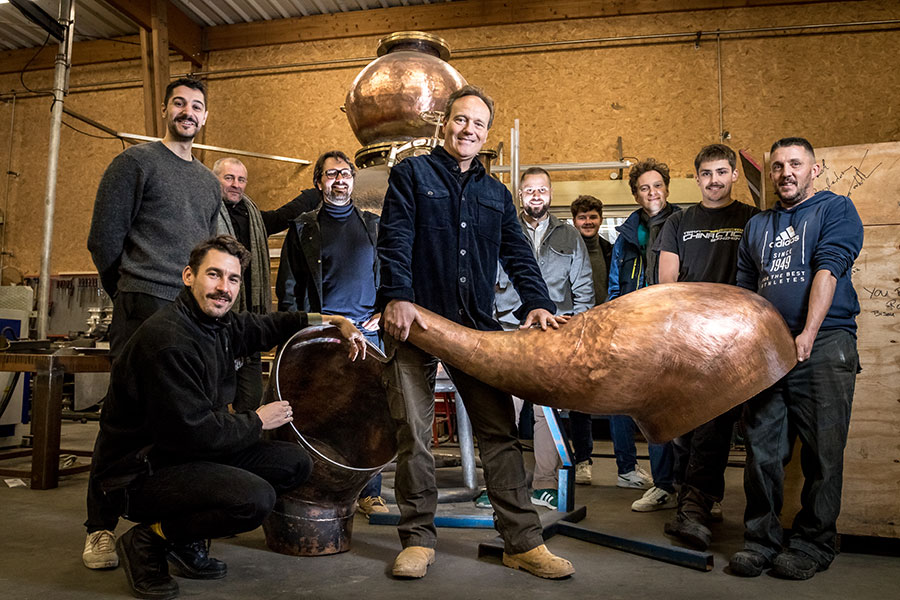
How passionate are you about stills?
High! I have been collecting them for about 15 years, a bit like when you get a car in a barn and you restore it. I do that with the stills.
Why stills and not cars ?
I am a bit nostalgic for the 19th century as far as distillation is concerned, because the knowledge and its applications, especially in the second half of the century, were incredible. At that time, we were more concerned with taste than with yields.
Much of this knowledge is now dormant. This is why I have created a foundation to safeguard the intangible heritage of cognac and rum. And I am passionate about finding the tools of those times.
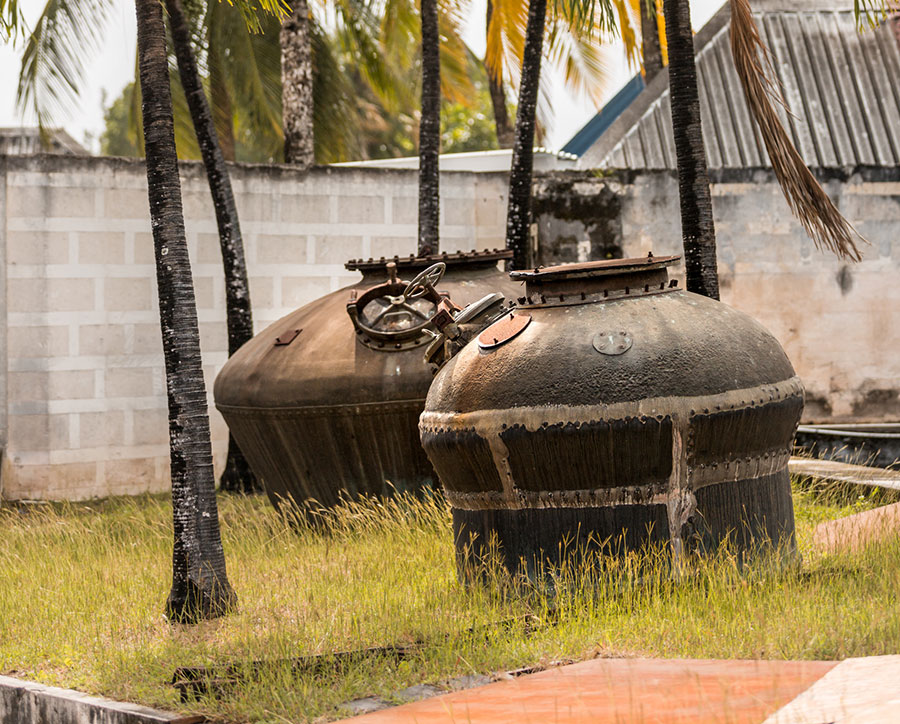
Isn’t that a bit old-fashioned?
Yes and no, it also has very current applications. For example, at the moment, we are writing a book with Matt Pietrek on the history and techniques of navy rum. We tried to define what a navy rum really is. Here, the alembic gives us the keys, by its forms, its characteristics. And at Plantation, we have recreated a navy rum, that is to say as it really was at the time.
West Indies Rum Distillery (WIRD) in Barbados has some very old stills, tell us more.
Coming from cognac, it is not by chance that I totally flashed WIRD, because indeed, it houses some mythical stills. With Demerara Distillers, WIRD is perhaps the distillery that has kept the most documentation and historical material.
We have a Vulcan that we renovated in 2018. It dates back to the early part of the 19th century and it’s run on technology that was put in place by the Rye Whiskey distillers on the East Coast of the United States. We also have the Old Gregg, which comes to us from an old plantation, the Gregg Farm. It is a still that dates back to 1850 and has always been in operation. It is often confused with the Rockley.
It is only 30 hectos of load, so it is a small still, tiny even by today’s standards. The neck is in double thickness, you can pass cold water to create reflux, revolutionary for the time. Old Gregg is found in all Plantation expressions. We added the Old Pot, a new alembic, but we made it with old copper that I had in my collection, according to plans found in the archives. It is important to know that at WIRD, they kept a lot of architect’s plans, the Blue Prints. It is from them that I draw the missing parts when I want to restart an old still.
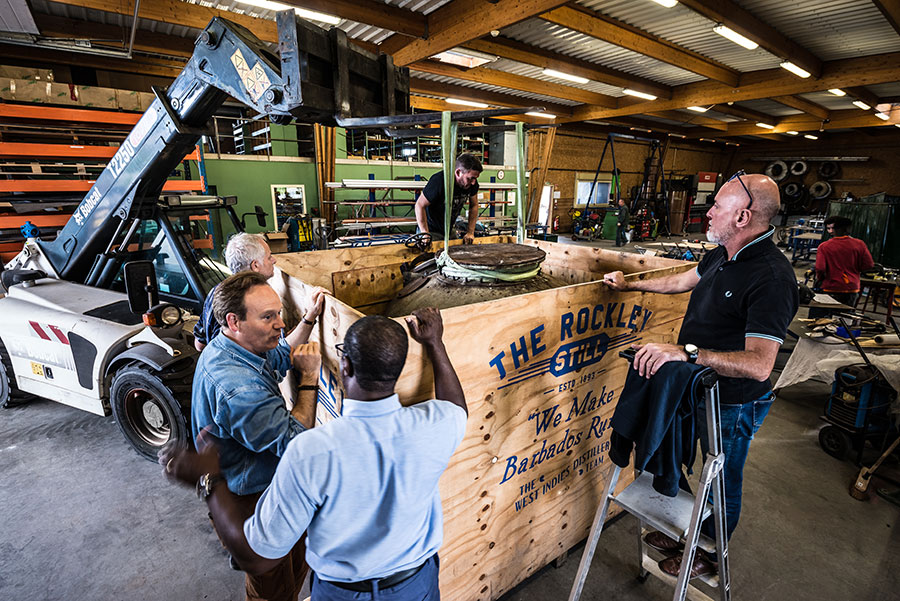
You had a Rockley still repaired, how did that happen?
We had this old still that was not working anymore. At first I thought it was a Shears and Sons still, which was a genius boiler maker from the early 19th century. But he produced hyper-complex machines with grinding lenses and it didn’t fit our model.
But the door was signed Shears, and you usually sign a still by its door. However, the rivets seemed a bit crude to me… in short, we had our doubts. However, the historian David Wondrich discovered a catalog in the National Library in London which showed that Shears sold still doors.
Before, as is still done in Cognac, one had to stop the still and unbolt the head to be able to go down inside to clean it. Shears had the idea to put doors on and sell them.

So this is a Rockley?
Yes, the door is signed Shears and dates back to the beginning of the 19th century, while the still is a farm still, that is to say a machine made on site in Barbados. Moreover, we can see that the dome was molded in the sand!
Well, this Rockley will make rum again! We wait a little like the messiah for the first drops that will flow this ancestor. We think that the rum will be whole, very fleshy, considering the elephant trunk which will channel enormously with little reflux. There will be esters, but also finesse. But sometimes we have surprises…
How did the actual restoration go?
We had the still loaded in a crate, which was transported by boat to Cognac, where there are still boilermakers who are able to repair old stills. Here, there is still a know-how in aging, distillation and repair, but this is also the case in Spain and Italy. However, they often need to be guided by historians, and here David Wondrich helps me a lot because he will find drawings, archives.
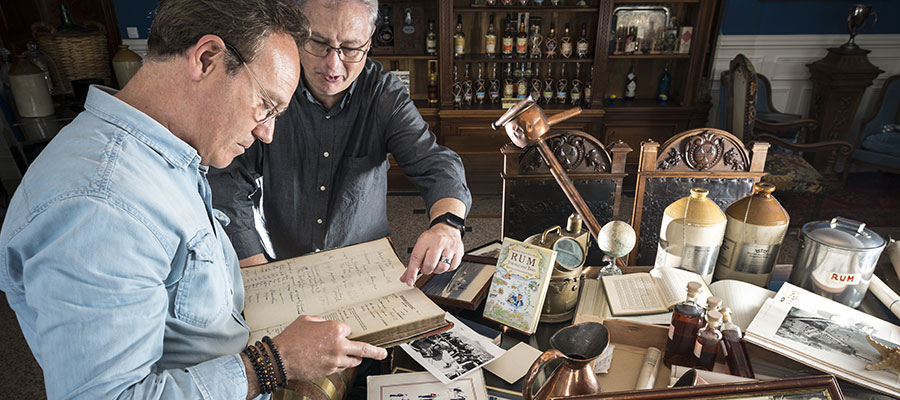
It was not possible to have it repaired on site?
There are welders, good craftsmen, but no boilermakers in Barbados. For this kind of work, you need someone who does it for a living, who does it all day. Gaylord xxxxx’s hammer sings, and he listens to it as he strikes the brass. He knows what he’s doing.
How much does this type of restoration cost?
It can cost between 50,000 euros if it’s a small restoration, up to 200,000 euros. For example, just to repair the elephant trunk of the Rockley, Gaylord spent 170 hours. It’s paid for. Then it has to be tested, etc. And given its reduced capacity, the rum will also be more expensive to produce.
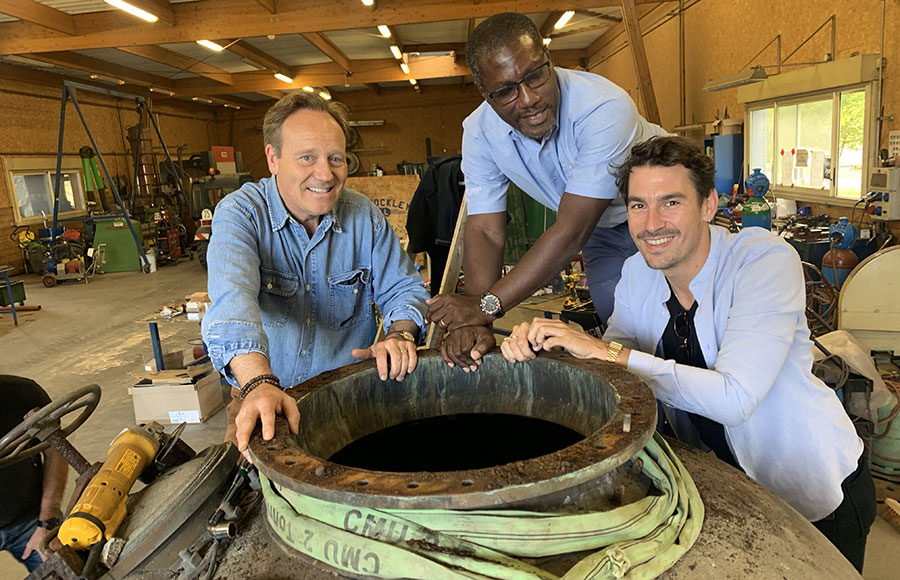
And after the Rockley, what will be the next restoration project?
We still have a Batson in the distillery yard. Charles Batson was a distiller in the late 19th century when Stades was redesigning Barbadian rum as a blend of column and pot still. Batson bought up old stills from plantations that had stopped distilling.
His son sold his distillery to Georges Stades and we still have one of his stills. It makes 30 hectoliters too, and it was reputed to have quite a temperament. We would like to restore it one day.
And what about the distillation columns?
Coming from Cognac where the still is king, at the beginning I was a snob against columns. I thought it was almost vulgar, because it cost 6 times less to distill. Then I tried it, it was explained to me… and I understood. The less knowledge you have, the more prejudice you have. At WIRD, there’s a 1943 Blair column that’s all copper.
It went silent in 1991. Our next project, if we have the funds, would be to restore it. There was also a Blair at Long Pond (in Jamaica, in which WIRD is a shareholder) that was still working about ten years ago, but it exploded. We also made an edition of Plantation Long Pond in the Single Cask with its last drops.
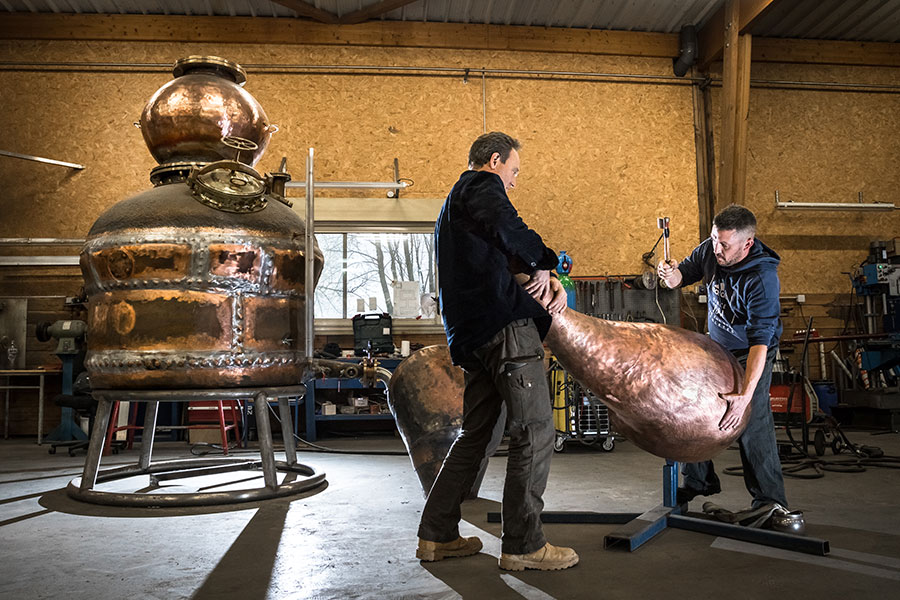
And in operation, what type of column do you have at WIRD?
We have a John Dore from 1970, completely manual, which was at the time the ultimate, a bit like a Citroen Maserati. Recently we changed the main column of the Webster which dated from 1891, but was less interesting.
We put in a vacuum column that allows us to make distillate for Plantation and we have a prach? from 1990, which is a small lees column. And we still have the patent for the Stades column, so maybe one day we will build one? It seems that in Cuba, there is a Stades that still distills.
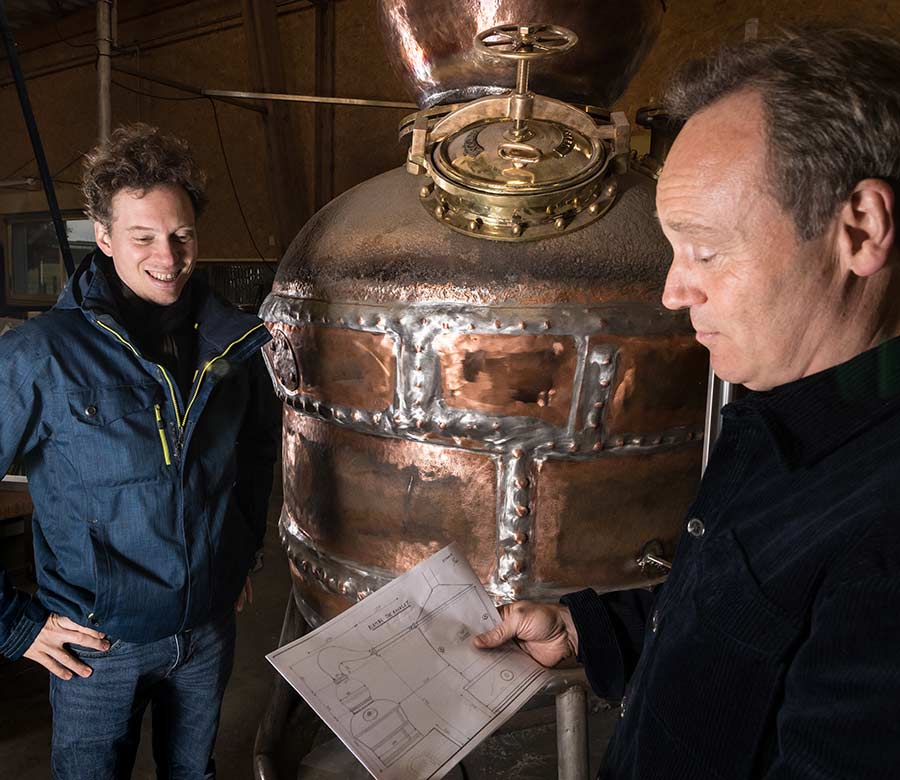
And in terms of rums, what is the purpose of having these different types of columns and stills?
It allows us to have rums with very marked colours, either to make editions in Single barrel, particular, unbalanced, but exciting. For informed people. And also to make beautiful blends. My grandfather used to say that someone who is very good at what he does looks difficult. Someone who is great, looks easy.
For example, this is our 20th anniversary. The neophyte will find it very good, without really understanding it, the informed amateur will be able to perceive all the work that is behind it, with the 20 types of wood. A bit like Mozart’s music, which is accessible and incredible at the same time. But beware, I am not comparing myself to him!
